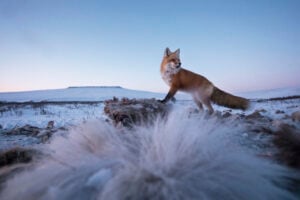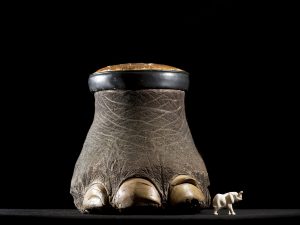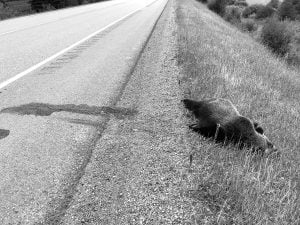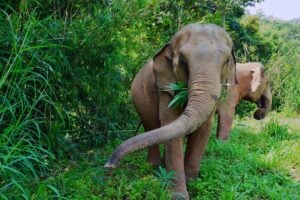
Wildlife
Do not disturb: Practicing ethical wildlife photography
Wildlife photographers on the thrill of the chase — and the importance of setting ethical guidelines
- 2849 words
- 12 minutes
Kids

Often identified by their large tusks, walrus are large marine mammals that can weigh more than 2000 pounds.
Common name: Walrus
Scientific name: Odobenus rosmarus
Inuktut name: ᐊᐃᕕᖅ (aiviq)
Type: Mammal
Diet: Carnivore
Group name: Herd
Weight: 1,000 kilograms (approx.), or 1.5 tonnes
Length: 3.6 metres (approx.)
COSEWIC Status: Special concern; extinct in Nova Scotia-Newfoundland-Gulf of St. Lawrence
The scientific name for the walrus, Odobenus rosmarus, is Latin for “tooth walking sea-horse.”
When most people think of the walrus, they think of the big tusks the animal uses to haul itself out of the water. Those tusks, which grow continuously, can reach lengths of up to 40 centimetres. The tusks are also useful for creating breathing holes when walrus swim under the ice.
Walrus resemble large seals that have dark brown skin covered with a thin layer of tiny brown hairs. Underneath their skin, walrus have a generous layer of fat to help them withstand the cold. Walrus also have whiskers on either side of their faces, which help them locate food, such as clams and shellfish, on the ocean floor.
Walrus spend a lot of time on land or pack ice. Because of their size, they appear to move slowly and sluggishly. However, unlike seals, walruses can move on all fours, allowing them to run as fast as humans in short spurts. When walrus are disturbed by approaching planes or boats, they will stampede at great speeds into the water. In the water, they are quite graceful and can dive up to 90 metres. They can also stay under for up to 30 minutes.
The largest single herd of walrus in Canada has about 5,000 members. It lives in the Foxe Basin, Nunavut, where numerous polynyas (areas of open water surrounded by pack ice) create a good habitat for the animals.
Walrus eat clams, shrimp, molluscs, snails, sea cucumbers and worms that inhabit shallow waters.
There are two subspecies of walrus: O. rosmarus rosmarus, or the Atlantic walrus, is found in eastern Canada and the High Arctic. O. rosmarus divergens, or the Pacific walrus, only occasionally wanders into the western Canadian Arctic from Alaska.
Are you passionate about Canadian geography?
You can support Canadian Geographic in 3 ways:

Wildlife
Wildlife photographers on the thrill of the chase — and the importance of setting ethical guidelines

Wildlife
An estimated annual $175-billion business, the illegal trade in wildlife is the world’s fourth-largest criminal enterprise. It stands to radically alter the animal kingdom.

Wildlife
This past summer an ambitious wildlife under/overpass system broke ground in B.C. on a deadly stretch of highway just west of the Alberta border. Here’s how it happened.

Travel
From South African penguins and Canadian bears to Australian wombats and Bolivian pumas, Robin Esrock introduces inspiring wildlife sanctuaries where volunteers make all the difference